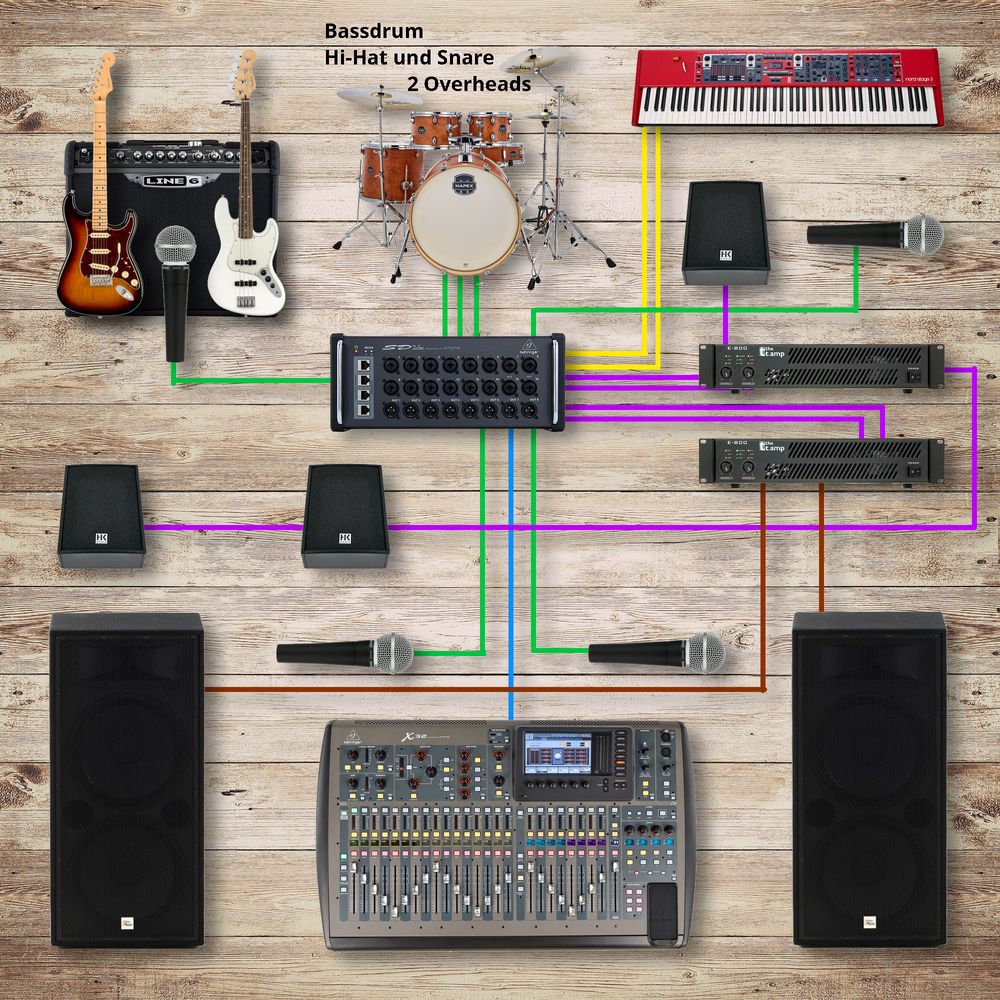10. Putting it all Together
Now, let's take a look at what a typical setup for a small band with five people (lead vocals, four instrumentalists, two of whom also sing) can look like:

Band Setup Diagram with 4 Instruments and 3 Lead Vocals
If we count, we've already used up a minimum of 11 mixer inputs (3 vocal microphones, 1 amp pickup, 4 drum mics, bass guitar via DI box, 2 keyboards). So, with a 12-channel mixer, you'd have just one channel left as a reserve. It's important to note that the mixer should have at least 8 microphone inputs.
Monitoring is also crucial. In our diagram, the drummer and keyboardist share a monitor. It's better if the keyboard player connects a small active monitor to their sub-mixer.
Tip:
If you intend to work exclusively with floor monitors, be sure to plan for two graphic equalizers. This will help you fine-tune the monitor system to match the stage acoustics. |
Diva Alert: "I can't hear myself!"
One thing is clear -at least for me: I wouldn't want the job of being up front on the stage. Lead vocals are a tough job!
Almost 80% of the audience focuses on the singer. To deliver what the audience expects vocally, they need to hear themselves well first (vocal control). Besides using floor monitors, this can also be achieved with "In-Ear Monitoring." These are the little earpieces connected by thin spiraled cables that come out from the singer's shirt, giving them a slightly remote-controlled look.
The advantage is that now, singers can hear themselves much better, the bulky monitor speakers disappear, and the stage acoustics significantly improve. The downside: the system takes some getting used to, and using a single earpiece can be detrimental to hearing, as the unprotected ear receives the full stage sound. Plugging both ears protects against noise, but it severs the connection to the audience. For more information, read our In-Ear-Monitoring Online Guide.



